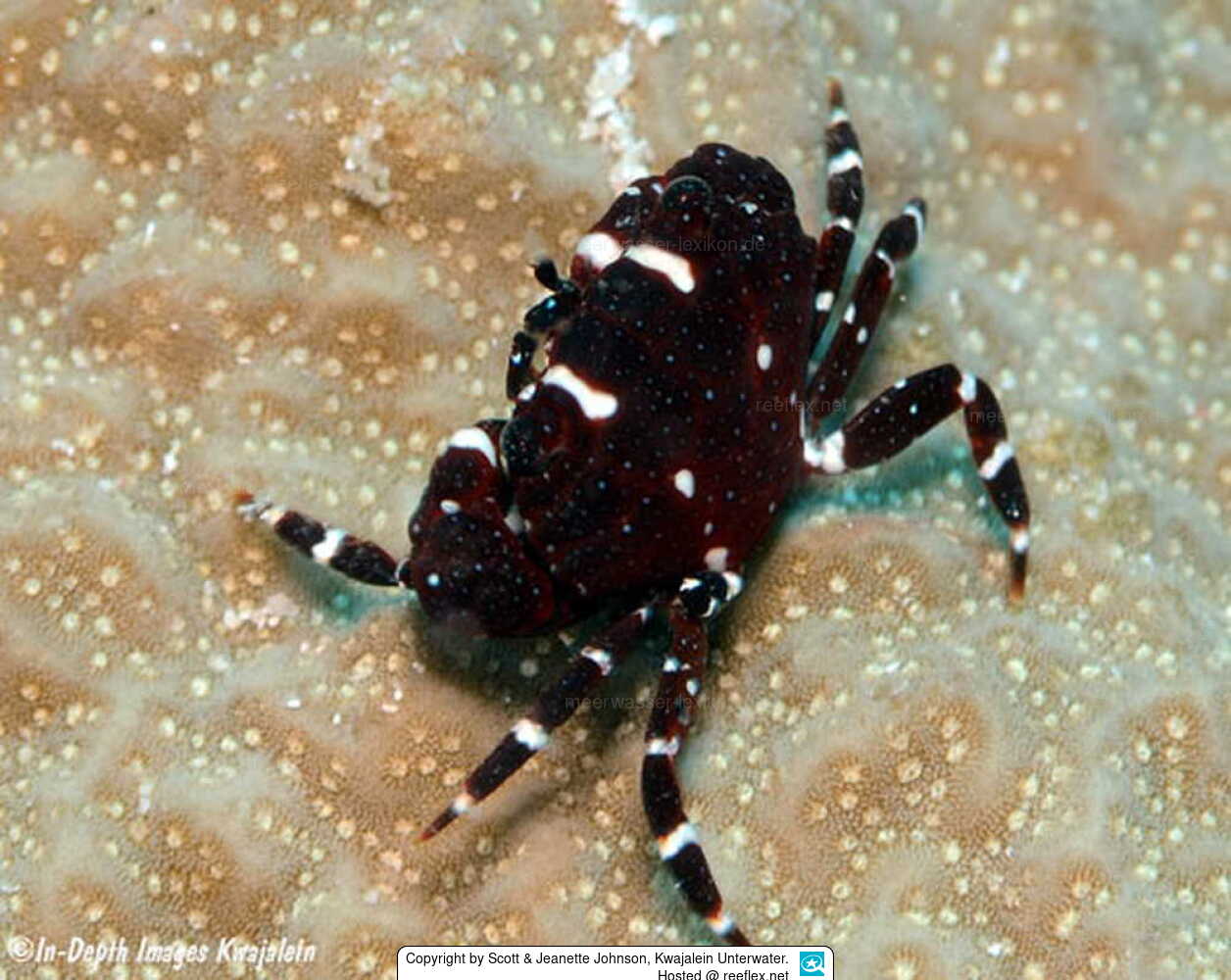Info
Xanthias latifrons is a small crab that lives in shallow water zones and is very variable in color, from juveniles to adults.
Although the crab is native to the Indo-Pacific, it has been able to find a way into the Mediterranean and is therefore considered an invasive species.
However, we are not aware of any effects on the fauna in the Mediterranean Sea so far.
Despite its actually protective shell, the small crab is on the menu of fish, such as the soldier fish Sargocentron tiere (Cuvier, 1829).
Since the crab is a predatory carnivore, it is better not to keep the animal in community aquariums.
Many species of the family Xanthidae can be poisonous, although they themselves have no poisonous apparatus (poisonous teeth, poisonous spines, poisonous glands in the skin), the consumption of these crustaceans can even be fatal for humans. Such animals are considered passive-poisonous.
The toxins of crabs (saxitoxin and tetrodotoxin) are produced by endobacteria and stored in the flesh of the crab, these e are highly potent and similar to the neurotoxins of puffer fish and just as deadly.
In its raw and cooked meat, consumption of the crab meat is toxic to humans!
Please be sure to clarify whether the meat of these crabs is toxic or non-toxic before eating it!
Call an emergency doctor immediately at the first signs of poisoning (e.g. breathing problems, muscle cramps)!
The good news is there’s no way you can be exposed to these toxins if you don’t try to eat these crabs – a bite or a jab isn’t going to do the job.
The bad news for those who unwittingly consume these crabs is that cooking the meat isn’t going to make the toxins any less effective.
Fortunately, toxic crabs don’t want to be eaten just as much as we shouldn’t be eating them, so they help us out with their glorious warning colours.
Synonyms:
Chlorododius tuberosicarpus Klunzinger, 1913
Panopeus latifrons de Man, 1887 [in de Man, 1887-1888]
Xanthodes minutus Rathbun, 1894
Although the crab is native to the Indo-Pacific, it has been able to find a way into the Mediterranean and is therefore considered an invasive species.
However, we are not aware of any effects on the fauna in the Mediterranean Sea so far.
Despite its actually protective shell, the small crab is on the menu of fish, such as the soldier fish Sargocentron tiere (Cuvier, 1829).
Since the crab is a predatory carnivore, it is better not to keep the animal in community aquariums.
Many species of the family Xanthidae can be poisonous, although they themselves have no poisonous apparatus (poisonous teeth, poisonous spines, poisonous glands in the skin), the consumption of these crustaceans can even be fatal for humans. Such animals are considered passive-poisonous.
The toxins of crabs (saxitoxin and tetrodotoxin) are produced by endobacteria and stored in the flesh of the crab, these e are highly potent and similar to the neurotoxins of puffer fish and just as deadly.
In its raw and cooked meat, consumption of the crab meat is toxic to humans!
Please be sure to clarify whether the meat of these crabs is toxic or non-toxic before eating it!
Call an emergency doctor immediately at the first signs of poisoning (e.g. breathing problems, muscle cramps)!
The good news is there’s no way you can be exposed to these toxins if you don’t try to eat these crabs – a bite or a jab isn’t going to do the job.
The bad news for those who unwittingly consume these crabs is that cooking the meat isn’t going to make the toxins any less effective.
Fortunately, toxic crabs don’t want to be eaten just as much as we shouldn’t be eating them, so they help us out with their glorious warning colours.
Synonyms:
Chlorododius tuberosicarpus Klunzinger, 1913
Panopeus latifrons de Man, 1887 [in de Man, 1887-1888]
Xanthodes minutus Rathbun, 1894







 Scott & Jeanette Johnson, Kwajalein Unterwater
Scott & Jeanette Johnson, Kwajalein Unterwater






